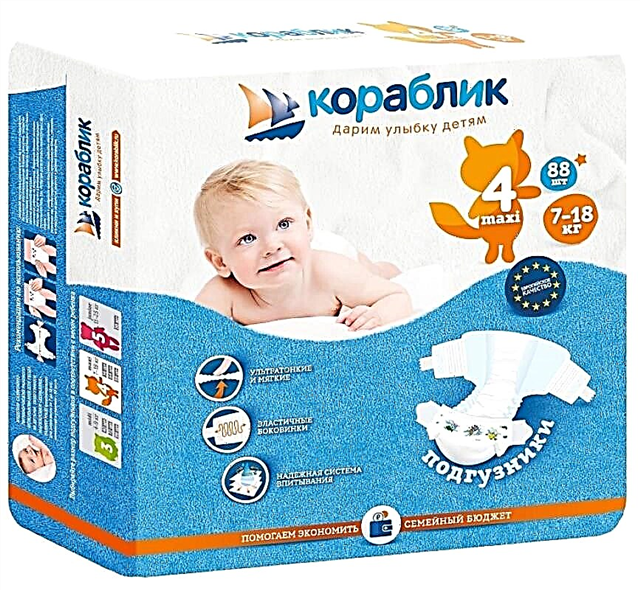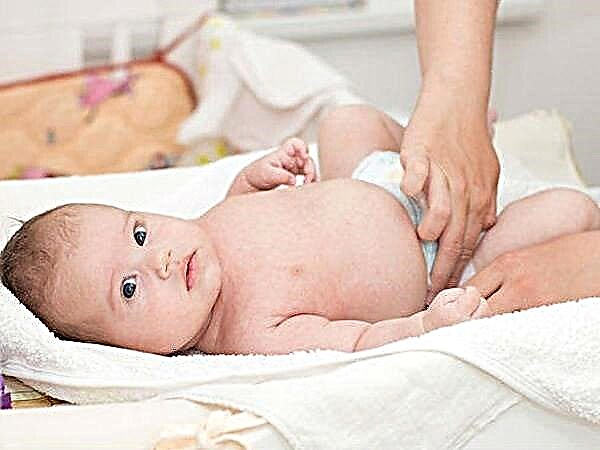
The clinical recommendations of the Ministry of Health give women the right to require pain relief at any stage of labor, because no one should endure unbearable pain. But anesthesia during childbirth is different, and its use may have its own characteristics.
Kinds
Anesthesia during childbirth is not considered to be something obligatory if it is not about a caesarean section. Childbirth is a natural process, and therefore the need and need for pain relief does not arise in every case. But a woman preparing to become a mother should know that doctors, by law, must provide her with pain relieving methods if she suddenly asks for it. This is provided in the Clinical Protocol for Obstetrics, which is the main guide to action for obstetricians.
The pain threshold is different for different women. One tolerates contractions more steadily, the other suffers and experiences severe stress even with less intense labor pains.
There are several types of anesthesia that can be used during labor:
- general anesthesia;
- spinal anesthesia;
- epidural anesthesia;
- analgesia by intravenous administration of light pain medications.

General anesthesia
General anesthesia is not used during natural childbirth, since it implies a complete lack of consciousness and muscle activity. The woman sleeps deeply, and therefore is immune to pain in general. This method is used when performing a caesarean section.... Recently, general anesthesia has been used less frequently; epidural anesthesia has come to the fore. Usually, during surgical delivery, general anesthesia is done endotracheal. Prepare for it in advance, if the operation is planned, or carried out for emergency indications, if the operation is emergency.
Before plunging the woman into deep sleep, premedication is performed - atropine is injected so that the heart does not stop in a state of anesthesia. Then potent analgesics are injected intravenously and the expectant mother falls asleep. She no longer feels how the surgeon inserts a tube into the trachea and connects it to the ventilator. The anesthesiologist has the opportunity to add a dose of narcotic substances at any time if the operation is suddenly delayed. As the surgeons complete the work, the doctor reduces the dosage of drugs, and gradually the woman wakes up. The smoother the decrease in dosage, the smoother the awakening will be. The tube is removed from the trachea before the woman regains consciousness.
This type of anesthesia is considered conditionally safe for the mother and the fetus, although the effect on the fetus still takes place: the baby is more sluggish after birth, but it gradually passes. Psychologically, this type of pain relief is considered more convenient, because a woman is not forced to be present during her own operation, as is the case with epidural anesthesia. The drugs remain in the mother's blood for another 3-4 days after childbirth, but in doses that cannot affect her consciousness.
General anesthesia has no contraindications. But the newly-born mother does not meet with the newborn immediately, but only after a few hours.


Epidural and spinal
This method belongs to the methods of regional anesthesia and is considered the most common today. Can also be used to relieve contractions and to perform a caesarean section... In this case, analgesics are injected not intravenously, but epidurally, that is, into the epidural space of the spine through a thin catheter, which is inserted there by the anesthesiologist.
The drugs block nerve impulses in the lower body. Depending on the goal, either more or fewer analgesics are administered. With a caesarean section, the sensitivity of the entire lower body is removed, during childbirth, the dosage of drugs is less so that the woman still feels her legs, but did not feel unbearable pain in the contractions.
The woman sits or lies on her side, the doctor finds the desired insertion point and slowly inserts the catheter with an injection into the spine, and then injects the medicine through it. The catheter remains in the spine and the doctor can add pain relievers if necessary. The effect occurs within 5 minutes.


The woman remains fully conscious, can talk with the obstetric team, perfectly understands everything that is said to her and is able to fulfill the requirements of the doctor. With a cesarean with this anesthesia, a woman can see her baby immediately after it is removed from the womb.
The likelihood of complications from such anesthesia does not exceed 1 case in 50,000 births... These include insufficient pain relief, trauma to the spinal canal and nerve endings, hematoma formation, leakage of cerebrospinal fluid, which is fraught with subsequent severe headaches.
The consequences for the child with such anesthesia are less pronounced, but still they are also present. Some lethargy in the child, lethargy is observed for several hours... According to reviews, pain sensitivity often persists, although it is rather dull.
There are contraindications to this type of pain relief - women with blood clotting disorders, spinal injuries, obesity, rashes on the skin of the back in the place where the puncture is planned, the woman has low blood pressure or bleeding or there are prerequisites to assume fetal hypoxia ...


Spinal or spinal anesthesia is performed as an epidural, but the introduction is deeper - no longer into the epidural space of the spine, but into the subarachnoid. Due to this, the effect of anesthesia is stronger, and spinal anesthesia is not always indicated in natural childbirth.
Choice
Theoretically, any woman in labor can choose anesthesia, but there are situations when only doctors make the choice. With natural childbirth, the choice is small - either mild analgesia or epidural anesthesia, if there are no contraindications. When preparing for a caesarean section, a woman can express her wishes, choosing between general and epidural anesthesia. She signs an informed consent, which indicates that she has been warned about the consequences, complications, and the technique of pain relief.
If the pregnant woman refuses epidural anesthesia, she is given general anesthesia, which has no contraindications. Do not ask the opinion of the woman in labor when the child needs to be rescued as soon as possible - with tight cord entanglement, for example, or if it is necessary to remove the uterus after cesarean.
With natural childbirth, a woman also has every right to both ask for anesthesia and refuse it, even if the doctors insist. This is a private matter, but in this case, the consequences of the refusal will be explained to her.

With complication
Rapid labor, impaired coordination of the tone of the uterus during labor, birth weakness - these conditions require a special approach to pain relief.
With prolonged contractions, which are irregular and do not lead to a significant opening of the cervix within 12 hours, the woman is exhausted, tired, and the fetus suffers. In order not to bring the woman in labor to the extreme, doctors may decide to administer sedatives and analgesics intramuscularly. For this, diazepam and baralgin are most often used. Having removed such contractions, they begin emergency measures aimed at urgent maturation of the cervix.
If labor is discoordinated, it is dangerous with placental abruption, the development of severe bleeding, rupture of the uterus and the death of the baby. This condition is often caused by inept and excessive anesthesia, which was given to a woman earlier, as well as drug stimulation of labor. In this case, the woman is injected with drugs that will be immersed in a short (3-4 hours) sleep for rest and recuperation.
Weakness of labor forces is manifested by insufficient activity of contractions, weak opening of the neck. The woman is very tired, she is also shown pharmacological sleep. For this, oxybutyrate 20% is injected intravenously or ketamine intramuscularly in dosages that are completely safe for both the woman and the baby.
Women with gestosis and hypertension can be provided with tranquilizers and antispasmodics.

Alternative pain relief during childbirth
Non-drug labor pain relief is considered the most preferred. It is applied in the first place, and if there is no action, only then it is reasonable to consider the issue of medical anesthesia. Such methods include, in particular, method of psycho-preventive training. Its essence lies in the elimination of stress and fear of labor.... This is done by doctors of antenatal clinics, specialists of courses for expectant mothers. Stress leads to the release of the hormones adrenaline and cortisone in high dosages. In response to them, the muscles tense, including the muscles of the uterus and cervix. Disclosure is difficult, and pain increases for the most part solely for a psychogenic reason.
It is important in advance to tune in correctly for childbirth, to perceive it as work, work that will be generously rewarded.
Massage of the sacral zone helps to reduce pain during contractions, which a woman can spend for herself on her own or ask for help from a partner if the birth is partner.
Effective self-pain relief occurs with proper application of breathing exercises... Deep and slow breaths, smooth and prolonged breaths stimulate the production of serotonin - a hormone of joy, which not only has a beneficial effect on the nervous system and psyche of the woman in labor, but also has a certain analgesic effect.


There is a whole list of poses in which it is easier and easier to endure labor pains. Nobody in the hospital forces a woman to lie on the bed. Until the attempts have begun, she can take any postures, move as she pleases, unless, of course, there are complications in which a horizontal position is shown.
Non-drug methods do not have a negative effect on the child.


Sequential use
Pain relief is usually not necessary after a natural birth. The exceptions are situations when a woman underwent an episiotomy (surgical dissection of the perineum to facilitate the birth of the fetal head) or ruptures occurred. On the first day after such childbirth, a woman, focusing on the intensity of pain, may be recommended to use light anesthetic drugs intramuscularly. Pain relievers are not recommended in tablets.
After a cesarean section, pain relief is mandatory within 24 hours, then - as a woman. When breastfeeding, the use of pain relievers in the first days after childbirth is not contraindicated. When a woman is discharged from the hospital, she may also have situations in which pain relievers are required. When lactation has already been established and the child is breastfed entirely without supplemental formula, it is imperative to consult a doctor to choose a drug that penetrates into breast milk to a lesser extent and enters the child.
The name of the drug and the dosage should be prescribed only by a doctor; self-medication for hepatitis B is categorically contraindicated.
If there is a need for anesthesia after childbirth (urgent surgery, cleaning, etc.), then anesthesia is performed, but after it, breastfeeding is not recommended for 3-4 days, as long as residual doses of drugs for anesthesia remain in the blood.

Reviews
The use of epidural anesthesia in childbirth by women is controversial. Some are sure that she practically did not help them, others argue that the birth was easier thanks to pain relief. Almost everyone claims that the pain relief had certain consequences. - For several months after giving birth, women suffered from headaches and complained of back pain.
Those who have had a caesarean section also have different opinions. Some support general anesthesia, others are happy with an epidural. As for doctors, they point out that each type of anesthesia has its own advantages and disadvantages. Only non-drug alternative pain relief has no drawbacks.

You will learn more about the methods of labor pain relief in the video below.



